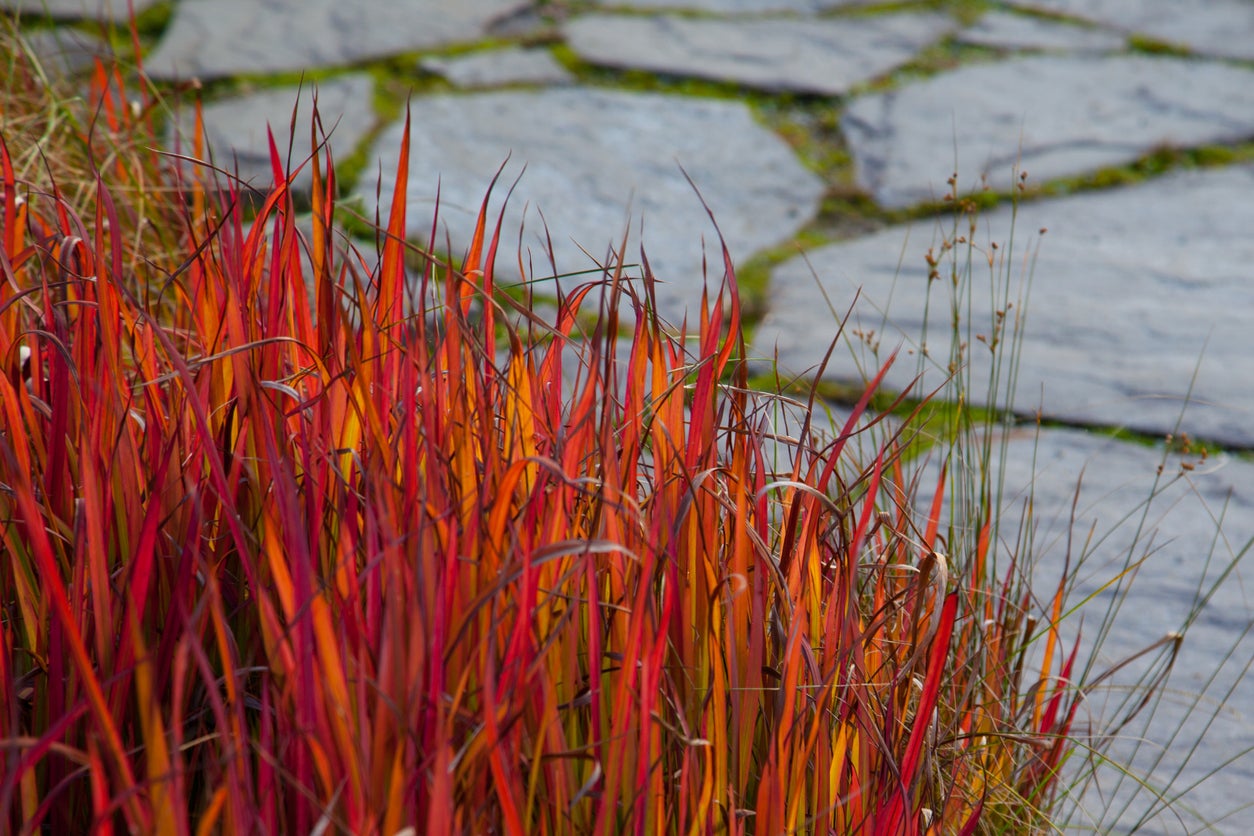Care Of Japanese Blood Grass: Tips For Growing Japanese Blood Grasses


Ornamental grasses provide explosions of movement and texture to the landscape. The Japanese blood grass plant adds color to that list of attributes. It is an excellent border, container, or massed plant with red tipped foliage and easy maintenance. There are no real tips on how to grow Japanese blood grass, but it is not hardy in freezing temperatures. Care of Japanese blood grass is novice level and an excellent starter plant for undermanaged garden beds. USDA plant hardiness zones 5 to 9 are best suited for growing Japanese blood grass. Try using this ornamental as a specimen in a fabulous pot or in groups along a path to produce a sweeping effect of crimson and green.
What is Japanese Blood Grass?
Japanese blood grass (Imperata cylindrica) is a perennial plant. Its foliage begins green with slightly tinged red tips and matures to the blood red color for which it is known. The plants get only about 2 feet (61 cm.) in height and are clumping rather than spreading grasses. They have little invasive potential when they are in their cultivated form, but if the plants are allowed to revert to green, they can become a nuisance plant. In fact, half the states in the United States have banned the sale and planting of the grass because it spreads through its rhizomes and takes over areas of native flora. The green is more aggressive than the cultivated red form.
How to Grow Japanese Blood Grass
The Japanese blood grass plant is low maintenance and has few pests or problems. The biggest issue is when the plant is not sited correctly. It prefers cool, moist locations and tends to revert in full shade, which makes it a potential hazard to native plants. Gardeners that are growing Japanese blood grass in southern states may find it weedy. When the plant is too wet, however, the roots can get a variety of rots. Amend your garden soil with some gritty material and compost and check the drainage before you install this grass. It is tolerant of urban pollution and drought-resistant once established. For color and persistence, the Japanese blood grass plant is an ideal candidate for most cultivated gardens.
Care of Japanese Blood Grass
The better the sun exposure, the truer and deeper the red color becomes in this spectacular ornamental grass. Established plants can withstand low moisture situations, but for the best appearance, water once weekly. Water plants in containers at least once per week in summer but reduce watering in winter as the plant goes dormant. Division is the quickest and most reliable method of propagating this plant. As long as the Japanese blood grass plant is installed in well-draining soil, few problems exist. However, those in clay soils tend to have wet roots, which promote root rots and fungus. The blades of the grass may get eaten by snails and slugs and can also get rust disease, which disfigures the leaves. Avoid overhead watering and use an organic slug bait to keep the brilliantly colored foliage free of holes and damage.
Sign up for the Gardening Know How newsletter today and receive a free copy of our e-book "How to Grow Delicious Tomatoes".

Bonnie Grant is a professional landscaper with a Certification in Urban Gardening. She has been gardening and writing for 15 years. A former professional chef, she has a passion for edible landscaping.